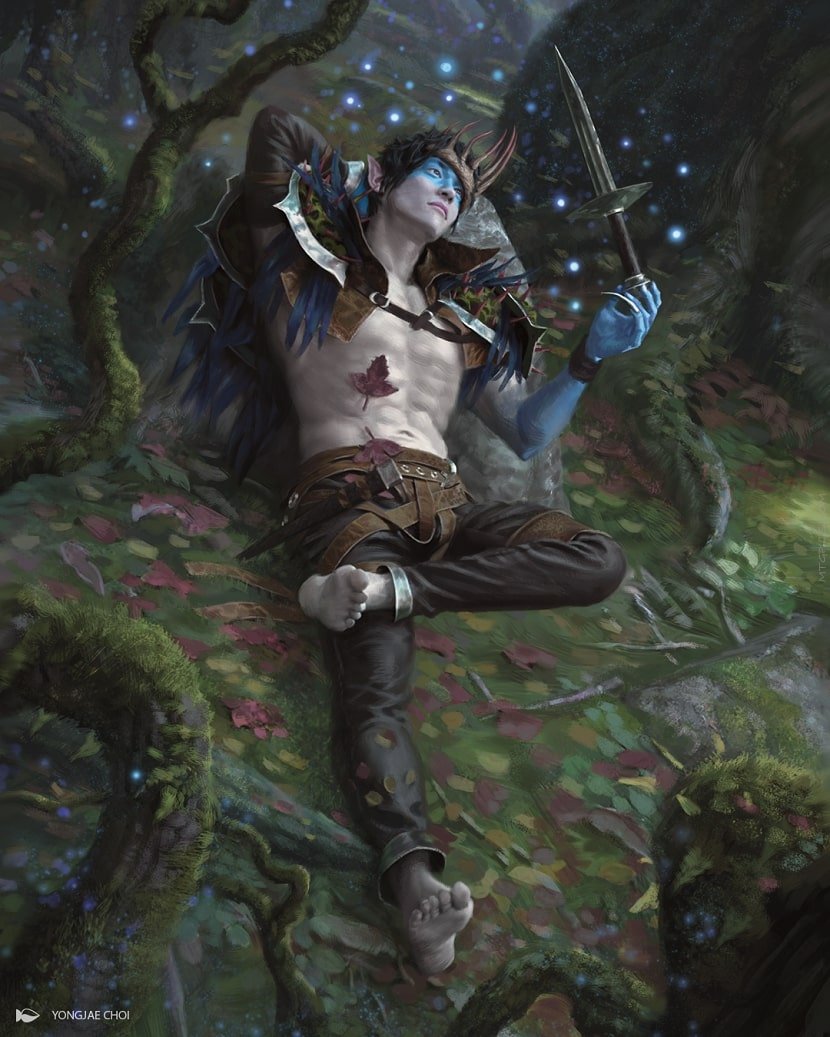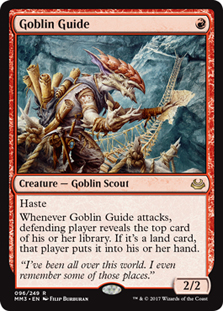Hello, and welcome back to this week’s installment of Sullivan’s Satchel. Unsurprisingly, most of the questions I received this week focused on companions, perhaps the most disruptive cycle of cards ever printed, and definitely grading on a scale (it should be harder to be disruptive as more cards are added to the card pool, so the companions are blowing almost any analog completely out of the water.) They are extremely powerful, novel, and have already made their mark in all of Magic’s Constructed formats, so they have quite the spotlight on them right now.
Remember, you can send in your own questions (companion related or otherwise) to [email protected] or DM me on Twitter @BasicMountain. With that:
Jarvis Yu asks:
Dear Patrick, I hope you’re doing well in these trying times, but my major question is as follows:
What the hell is going on with F.I.R.E., and realistically how much of this design philosophy can Magic take without driving out the other audience? Other card games have died out because of this sort of massive power creep / constant bannings. Also, what steps would you take to right the ship back?
Best,
Jarvis
F.I.R.E. is an acronym elucidated in a number of Magic’s design articles. It stands for Fun, Inviting, Replayable, and Exciting. Since the acronym first started becoming part of their public discourse around War of the Spark, it is associated with a perceived ideological shift in the appropriate amount of power in each set. There is some credence to this perception — Play Design’s Bryan Hawley mentioned that even though Oko, Thief of Crowns is an unacceptable power level outlier, the aggregate power level of Throne of Eldraine is within an acceptable band. Cards from War of the Spark and forward have made up more than their share of representation in tournament decks, including in Legacy and Vintage, so it is worth considering that this might be the new normal.
Still, only one of those letters in F.I.R.E. (the “E”) has any implication of rate to me. It is fun to draft, and plenty of the cards you play with in Draft are below the 50th percentile of power level. Low complexity and barrier to entry are inviting, and a deep, high-variance card pool is more replayable than a handful of outliers dictating everything. Many of Magic’s most famous mistakes were a function of late changes, miscommunications, and misunderstanding of rates, and those issues aren’t solved, nor entirely solvable. Even if the bar has been raised on the 80th-percentile rare, and even there are very few “bad rares” anymore (both of which are probably net-positive, on balance), I think it’s extrapolating too much to assume that all the best cards of the last year are an expression of intent.
Not all increases in power level are created equal. Goblin Guide was and is a wild increase in power level even in comparison to previous red aggressive creatures that showed up in Constructed, but you can get out from under that with Kitchen Finks or Timely Reinforcements or a bunch of other designs. This isn’t just theory — Goblin Guide subsidizes Burn in a very powerful way, but no one is scratching their head about how to increase their chances against the deck.
If I have a criticism of the sum of the big bets Wizards of the Coast (WotC) has made in the past year, it is that the floor is too high on too many of them. Teferi, Time Raveler; Narset, Parter of Veils; and Uro, Titan of Nature’s Wrath all have ceilings that are through the roof, and floors somewhere around “you get your card back and the opponent had to spend some effort removing the card in question.” Oko has so much loyalty for a three-cost planeswalker, and that insulates it from the most common floor a planeswalker encounters — that the opponent has enough stuff on the battlefield to run it down after one activation. To the extent I’d make a call to action, it would be something like “it is okay for the powerful cards to be bad sometimes.” After all, that sounds fun, inviting, replayable, and exciting.
From Brad Nelson, @fffreakmtg:
Why people always gotta be pulling out the ban hammer before trying to beat stuff?
It’s easy to assume that “competitive players” is an umbrella term that encompasses a bunch of people with similar goals but that isn’t the case. Let’s say, just as an example, that you’re one of the best players on the planet, with tremendous testing resources and effectively unlimited access to cards. Trying to find the right mix of cards to beat The New Best Thing (or finding the best way to exploit it yourself) might be literally the most satisfying thing in all of Magic. The game is at its most fun when it is challenging, and the cards that seem too good (and might really be) are useful for presenting that challenge. Among this demographic, bans are usually called for only when the challenge proves “unsolvable,” and there’s a level of agnosticism about play pattern quality or other metagame considerations.
The vast majority of competitive players engage with the game in a much less singular and successful fashion, and usually have limitations about what decks they can play from week to week, either due to perceived proficiency, card availability, or both. A lot of these players assume a rough social contract that amounts to “I want to play against a bunch of different stuff, and I don’t want to get embarrassed, either because there’s a massive gap in overall quality of my deck or because the opposing decks don’t allow for satisfying interaction.”
To go back to F.I.R.E., this speaks to replayability, and a dominant card or strategy cuts against the replayability. It also speaks to why people call for bans for decks like Dredge or Mono-Green Tron even if they aren’t especially good — the puzzle on how to “solve” it isn’t very robust or satisfying, so the games aren’t that fun even if I’m winning more than half the time. Playing against Dimir Mill in Modern one match out of 500 might be so novel that it’s fun even if the match isn’t very interesting, but that experience breaks down pretty quickly, and decks like Dredge and Mono-Green Tron are way more ubiquitous than one match out of 500.
None of this is meant to cast a value judgement on either perspective, or any other. I think the first one is definitely more useful when it comes to trying to win games — the rules are what they are, the cards are what they are, and so the best thing you can do is try your best under those parameters. There’s also an “authenticity” element. These cards were printed, that’s a tacit declaration that they’re an intentional part of the game experience, and asking for bans is seen as something akin to complaining to the referees.
But not all problems are fun to solve for all people, and WotC’s relatively lower bar for bans compared to the historic burden has created an environment where people feel comfortable suggesting bans in line with that lower burden. Often the problematic cards get banned anyway, so why silently wade through games you aren’t enjoying instead of asking for what you want?
From “Coach” Stu Somers:
Here are 2 satchel questions, one of which might not make the cut
- What is your favorite SCG show you ever did coverage of
- What is your favorite thing to gamble on
To the first question, not any particular show, but Tom Ross run of dominance in and around 2014 with budget beatdown decks was incredible, probably the best blend of technical and creative play I’ve seen in my decade of covering events. Most of the times someone very good wins an event, I feel like the other very good players in the room could have done about as well with the same deck and breaks; Tom had finishes that felt singular.
To the second, sports, politics, and the behavior of strangers in public. The latter requires a very special set of circumstances, but at its peak is the most fun thing to bet on.
Lastly, from @RideTheIguana:
Companion as a mechanic has only one direct analogue in Magic, Conspiracies. In a fully powered cube, certain Conspiracies such as Power Play are easily pickable over power. This introduction of a previously silver border mechanic into eternal formats immediately had a resounding splash. If the Chicken Littles are right, do you think that a rules update to completely remove Companion functionality in certain formats (ala Conspiracies in Vintage) is on the table?
I don’t agree with the premise. Companions don’t mine the most conventional design space, but I think they are much more analogous to Wishes, Gemstone Cavern, and Leylines than they are to silver-bordered cards. The conspiracies reference “drafting,” which is a very specific version of card acquisition and legality that doesn’t make sense in Constructed; it’s about the same as referencing ante. The companions work “fine” in casual games (even more than the Wishes, since there’s a deckbuilding restriction and it isn’t open-ended what you can go search for; you just have your companion) and are intuitive enough for competitive play.
I don’t think this would be a conversation if the perception of power level wasn’t so high right now. That, combined with how different they are from everything else, is leading people to suggest measures such as blanket card type bans or functional errata. I don’t think any of that makes sense. At the end of the day, they are functional (maybe overly powerful) Magic cards that work perfectly fine in the rules, and if one or more of them is problematic in one or more formats, I prefer the path of banning them individually just like anything else.



